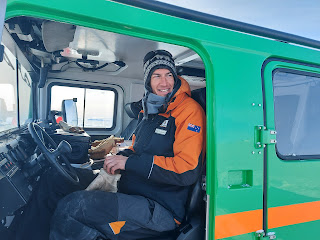Antarctica 2022 - Overview and Background

Every winter, two metre thick ice forms from the ocean surrounding Antarctica to effectively double the size of the continent. I've been studying the layer of ice crystals that accumulate beneath this sea ice, known as the sub-ice platelet layer for the past several years. These disc-shaped crystals of ice are created in ‘supercooled’ water and float upwards to form a layer with an open lattice-like structure that can be several metres thick. Platelet ice performs an important role as a protective environment for ice-associated algae and the developmental stages of Antarctic Silverfish - a keystone species of the Ross Sea. In this new project, we are seeking to understand the distribution of the platelet layer under the ice in the Southwestern Ross Sea, and how this will change as our climate shifts. Our team at NIWA, principally Dr Craig Stewart, have developed a bespoke engineered solution known as the Sympagic Sampler. This is a huge drill that collects large cylinder-shaped sa...
